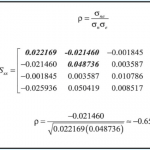Where Theory Meets Practice Archives
Sampling Statistics: The F Distribution
The F Distribution Please note that the mathematical language used in this version of the article may be formatted incorrectly, due to no fault of the author. Please reference the details of Equations (1) and (2), and check with our print or full digital issue if unsure. In previous articles on sampling statistics, I covered the […]
What Is a Least Squares Adjustment Anyway?
Up to now I have talked about a least squares adjustment as if everyone knows what it involves. In this article, I discuss what a least squares adjustment is and what makes it so valuable in adjusting observational data. Note: Please click on the images below to see them or read our full issue to […]
Methods of Analyzing Data, Part 1
Identifying Blunders with Graphics Mistakes and blunders are an inevitable part of being human. In fact, a wise person once told me that the only people who don’t make mistakes are those who don’t do anything. Because a least squares adjustment of a plane survey is nonlinear, it will not arrive at a solution if […]
Methods of Analyzing Data, Part 2: Blunders!
Elementary Statistical Procedures In this article, I assume that a least squares adjustment has been performed. Unfortunately, many novices believe that their work is done because they now have a solution to the unknown station coordinates. However, nothing is farther from the truth. It is at this point that the real work begins in analyzing […]
Methods of Analyzing Data Part 3: Data Snooping & the tau Criterion
In previous articles, I discuss two rudimentary techniques that can be used to identify blunders in data. However, anyone who has used an advanced least squares adjustment package knows that such software often uses a post-adjustment statistic known as the tau criterion. The tau criterion is a modification of a method known as data snooping, […]
Part 1: Foundations for Computing Error Ellipses
Standard Error Rectangle and Error Ellipse What is an error ellipse? One of the advantages of a least-squares adjustment over other methods is that a byproduct of the adjustment is not only the most probable values for the unknown coordinates but also standard deviations on these values Suppose for a moment that we are computing […]


